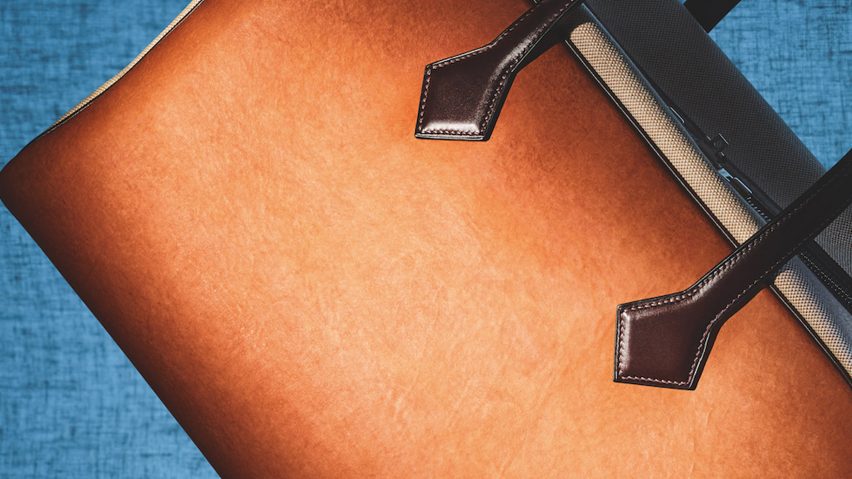French luxury house Hermès has partnered with biomaterials company MycoWorks to reimagine its Victoria shopper bag in a leather alternative grown from mycelium.
The bag will be available from the end of this year and features amber-coloured panels made of mycelium – the thread-like filament structure of fungi.
These sheets are tanned and finished by Hermès tanneries in France, much like real leather, to imitate its look and feel from the wrinkling all the way to the subtle colour gradient.
Called Sylvania, the resulting material was created as part of a three-year collaboration between MycoWorks and Hermès to fine-tune mycelium leather for use in a commercially available luxury product.
With the release of the Victoria bag, Hermès joins other major fashion houses in the race to find a viable, non-plastic alternative to animal leather, due to the increasing environmental and ethical concerns.
Last October, Adidas, Stella McCartney, Lululemon and Gucci's parent company Kering announced that they were investing in another mycelium-based alternative called Mylo, with the first products made from the material expected this year.
Mycelium has proven a popular avenue for biomaterial companies, due to its structure that can be grown to fill almost any desired shape.
MycoWorks claims that, unlike other mushroom leathers, its version does not need to be compressed to achieve a durable, uniform finish.
Instead, the mycelium is grown in trays with a unique fermentation process that according to the company enables it to grow into a dense, intertwined structure that is naturally more homogenous and hard-wearing.
"Sylvania represents how nature and biotechnology can work in concert to create a material with the highest standards of quality," said MycoWorks CEO Matt Scullin.
"[It] is the result of a shared vision for growing the future of materials and a quest to unlock new design possibilities."
According to Scullin, the material is vegan, biodegradable and has a lower carbon footprint than animal leather production, although specific numbers to support this have not been disclosed.
"[It has] matched or surpassed leather against all of the standard leather test criteria including tensile strength, abrasion resistance and colourfastness," Scullin added.
Despite this, Hermès still used animal leather for the Victoria bag's calfskin handles and the luxury house told Business of Fashion that Sylvania will not be replacing the classic leather goods the company is known for.
Beyond mycelium, brands have also experimented with a range of other leather alternatives, with New York streetwear label Public School using yeast and bacteria to grow a trainer and shoe brand Allbirds investing in a Plant Leather made from vegetable oil, cork and rice husks.
Photography is by Pol Rebaque save for the top image, which is by Coppi Barbieri.

